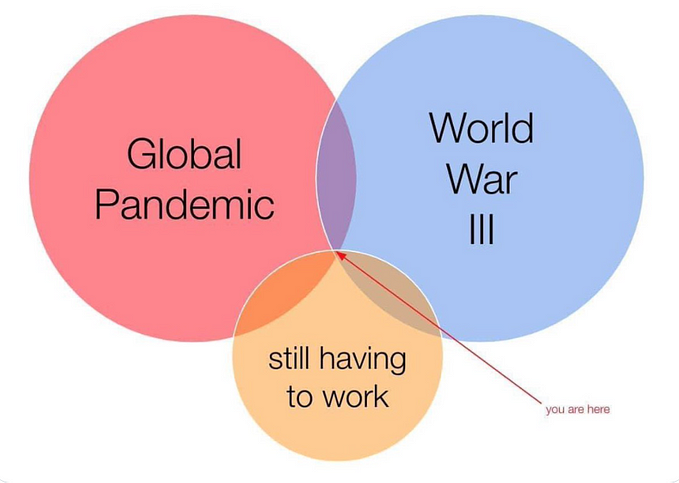The Science of Ritual
Sometimes science works in mysterious ways.
It is scientifically impossible that touching a baseball glove can affect the outcome of a game. But before every game, my friend Lith touched the baseball glove of her second baseman before she would head out to the field and take her place leading third base. She believed that there was something magical about the glove-to-glove contact. More likely what transpired was a connection between two players that helped them focus and ensure they were in sync and able to successfully execute high-speed plays on the field. This ritual was one of many things that took Lith’s team on to win the nationals, and ultimately helped her secure her position in Canada’s Softball Hall of Fame as one of Canada’s best players.
Many of the best athletes commonly use rituals. One of the top-ranked tennis players in the world, Rafael Nadal, points the labels of his drinking bottles toward the end of the court he’s about to play from and takes a cold shower 45 minutes before every match. He credits these rituals with helping his game. One of the most well-known team rituals is the performance of the “Maori Haka” by the All Blacks New Zealand rugby team. To the rumble of loud drums and chanting, they bulge out their eyes and stick out their tongues. They grunt and yell, while beating their bodies and waving symbolic weapons.
The Science of Ritual
Rituals are defined by researchers as being a symbolic activity that is performed either before or after an event with the intention of achieving a desired outcome, such as winning a competition or making it rain [1].
While rituals are powerful tools to help athletes’ performance, they don’t magically affect athletes’ performance. But the truth is there is magic in ritual. It’s not voodoo — it is the magic of science.
Sports psychologists (e.g., Schippers & van Lange, 2006[2]) have identified some very real physiological and cognitive processes that affect athletes as they perform rituals.
Rituals aid in mental preparedness. They sharpen athletes’ focus, make them more mentally aware, cultivate feelings of confidence, and help them to visualize success. In these ways, rituals work in much the same way that a placebo does.
Rituals promote physiological readiness. They help relax the athlete, help to loosen up their bodies, and support them in making real technical adjustments to prepare and optimize their performance.
Science Offers Other Insights on Rituals
While the power of rituals has been demonstrated time and again in the world of sports, scientific research highlights the role that ritual plays in other parts of our lives.
Rituals help people overcome grief associated with financial loss
A team led by professors Michael Norton and Francesca Gino from Harvard Business School[1] started to explore how rituals can help people to overcome grief associated with financial loss. They designed an experiment in which people performed a ritual, and were also given an opportunity to receive $200. One group in the experiment was instructed to perform the ritual that included writing out how they were feeling on a piece of paper, sprinkling salt over their written emotions, tearing up the paper, and counting to ten. A second group wasn’t asked to perform this ritual. Then participants in each group were told that someone else was going to get the money and that they were losing out on the opportunity.
Participants who performed the ritual were less upset about losing out than those who hadn’t. Performing the ritual gave people the sense that they were more in control of the situation, something that ultimately helped reduce their feelings of loss. A particularly important takeaway from this study is that performing the ritual helped participants overcome loss, regardless of how much (or little) faith they placed in the ritual itself. So, even when people were skeptical and doubted the value of the ritual, they still benefited from performing the ritual.
Rituals enhance experiences
In an experiment led by Kathleen Vohs[3], performing a ritual was found to enhance the consumption experience. In this particular study, participants in the ritual condition were asked to break a chocolate bar in half, slowly and carefully unwrap the bar, and eat one piece at a time. Participants who performed the ritual reported that the chocolate was more flavourful and worthy of being slowly savoured. Furthermore, participating in the ritual made people more mindful and aware of their actions, and therefore more able to derive pleasure through consumption.
Combined, the above studies suggest that rituals may be a way to transform a variety of life experiences so they become less stressful, if not somewhat more enjoyable.
Not All Rituals are Helpful
You may be thinking to yourself, “of course rituals can help with these things” — a thought that is very appealing to our intuition. Yet it is important to understand that magic isn’t real and there are some rituals that don’t help people, and sometimes even hurt them. For example, there are a number of naturally-occurring rituals pertaining to money (i.e., rituals that ostensibly attract money or luck).
Here are a couple examples of rituals that promise wealth (found on the internet):
You are going to need a handkerchief in any color, though black or green is best. Once it gets dark turn out the lights and spread the handkerchief out in a pool of moonlight. If there isn’t any moonlight, the light from a street lamp outside will do. What you are looking for is light associated with the night rather than the day.
Hold the knotted fabric tightly in your hands, and announce your intentions for saving money out loud. State that you want the money to stay in your pocket and no one else’s, and that you’ll keep it safe. When you are done, toss the bundle into freezer, and place it all the way to the back. Don’t untie it until you have all the money that you need.
When people believe these types of rituals, it may actually discourage (or stand in for) desired behaviours (e.g., people who have performed a ritual and feel lucky may decide they don’t need a financial plan).
And yet, the internet is filled with rituals that follow a formula like this.
While there are many rituals like this that people believe will help them accomplish their goals, many rituals don’t actually have anything in them that will support human behaviour in the ways that sports rituals help athletes to optimize their performance.
So, what can we do to distinguish between helpful rituals and rituals that aren’t so helpful?
Well, first we can take a closer look at what makes a ritual believable.
Key Ingredients of a Successful Ritual
Christine Legare and her team[4] travelled to Brazil to study rituals called simpatias. These rituals are very common and are used to help people with everything from wishing a toothache away to finding a romantic partner.
One example of a simpatia to find a partner goes like this:
Buy a new sharp knife and stick it four times into a banana tree on June 12th at midnight (i.e., Valentine’s day in Brazil). Catch the liquid that will drip from the plant’s wound on a crisp, white paper that has been folded in two. The dripping liquid captured on the paper at night will form the first letter of the name of your future partner.
The research team took these rituals and tested different variations of them. They mixed up the formulas, like how many steps there are and how specific they are. It turns out there are three key ingredients that make rituals believable to the people doing them:
1. Multiple steps: Rituals that are detail-oriented and have a lot of steps are more believable than ones that do not.
2. Repetition: Rituals with repeating steps are more believable, perhaps because it’s natural for people to believe that if doing something once has an effect, then repeating it must have an even greater effect.
3. Specificity: Rituals that must be performed at a specific time are thought to be more effective than those that can be performed at any time.
Using Rituals to Help Our Lives
Now that we have an understanding of what makes a ritual more believable, maybe we should start to design rituals that can help us with other things. Difficult things. Things we aren’t so good at. Like saving money. But basing the ritual on things that we know do work.
My colleagues at BEworks and I wondered how can we merge what we know about rituals with what we hope to accomplish in the realm of personal finances? Can rituals transform our financial lives? We think yes, and we are running experiments to determine if rituals can be used to help us with our financial goals.
My business partner Dan Ariely and researcher Merve Akbas worked with a team in Kenya to help people save money. We all know that saving money can be very hard. Their experiment compared a number of techniques like reminders and matching of funds to help people save money. One tactic in particular was especially helpful. People were given a metal coin, the size of a poker chip, that had been painted gold. The poker chip had numbers for each week. Participants were encouraged to lock away the coin in a special place, take it out every week, look at it, and scratch the gold off the number every week they actually saved. Now, we all know how hard it is to save money, and it is especially hard if you are very poor. But it turns out that the people who used the gold coin to help them with saving money ended up saving almost five times more than people who hadn’t engaged in the symbolic ritual with the gold coin.
A Final Thought
We know that ritual already plays a huge part in our lives. At the same time, we know there are certain things that we prefer not to think about, let alone to take concrete action on, like increasing our savings.
Given what we know about how the mind works, it makes sense to create rituals in our lives so that we inch towards the sacred end of the spectrum, where rituals can help us to make better decisions, and to make things like financial planning less threatening, more gratifying, and likelier to happen.
Happy science!
[1] Norton, M.I & Gino, F. (forthcoming). Rituals alleviate grieving in loved ones, lovers, and lotteries. Journal of Experimental Psychology: General.
[2] Schippers, M.C. & van Lange, P.A.M. (2006). The psychological benefits of superstitious rituals in top sport: A study among top sportspersons. Journal of Applied Social Psychology, 36(10), 2532–2553.
[3] Vohs, J., Wang, Y., Gino, F. & Norton, M.I. (forthcoming). Rituals enhance consumption, Psychological Science
[4] Legare, C.H., & Souza, A.L. (2012). Evaluating ritual efficacy: Evidence from the supernatural. Cognition, 124, 1–15.









